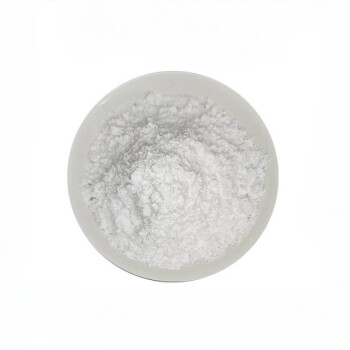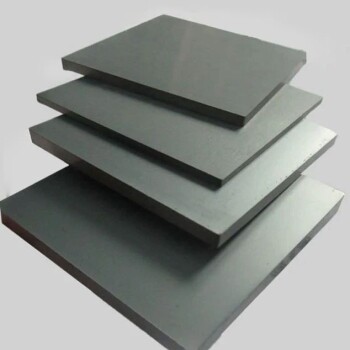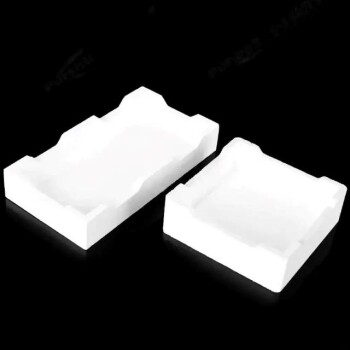Advanced ceramics are integral to numerous industries, offering unparalleled performance in high-temperature, wear-resistant, and insulating applications. Our range includes Alumina Zirconia Special-Shaped Parts, Zirconia Ceramic Plates, Silicon Carbide Ceramics, and more. Each product is meticulously crafted to meet the stringent demands of scientific research and industrial processes.
Toggle Categories
Get Instant Support
Choose your preferred way to connect with our team
-
Get Free Quote Fill out form for detailed pricing
-
Send Email Detailed inquiry support
-
WhatsApp Quick mobile chat
Response Time
Within 8 hours on working days, 24 hours on holidays
advanced ceramics

Vacuum Heat Treat and Sintering Furnace with 9MPa Air Pressure
Item Number : KT-APS

Precision Machined Zirconia Ceramic Ball for Engineering Advanced Fine Ceramics
Item Number : KM-G03

Engineering Advanced Fine Ceramics Head Tweezers with Pointed Elbow Zirconia Ceramic Tip
Item Number : KM-C015

Advanced Engineering Fine Ceramics Low Temperature Alumina Granulation Powder
Item Number : KM-P03

High Purity Alumina Granulated Powder for Engineering Advanced Fine Ceramics
Item Number : KM-P02

Advanced Engineering Fine Ceramics Aluminum Nitride (AlN) Ceramic Sheet
Item Number : KM-DG05

Silicon Carbide (SIC) Ceramic Plate for Engineering Advanced Fine Ceramics
Item Number : KM-DG03

Silicon Carbide (SIC) Ceramic Sheet Wear-Resistant Engineering Advanced Fine Ceramics
Item Number : KM-DG02

Zirconia Ceramic Gasket Insulating Engineering Advanced Fine Ceramics
Item Number : KM-G04

Conductive Boron Nitride BN Ceramics Composite for Advanced Applications
Item Number : KM-D9

Advanced Engineering Fine Ceramics Boron Nitride (BN) Ceramic Parts
Item Number : KM-P01

High Temperature Alumina (Al2O3) Furnace Tube for Engineering Advanced Fine Ceramics
Item Number : KM-C06

Advanced Engineering Fine Ceramics Alumina Ceramic Saggar for Fine Corundum
Item Number : KM-C05
Unmatched Performance with Advanced Ceramics
Advanced ceramics represent a pinnacle of material science, offering solutions that traditional materials simply cannot match. Our products, including Alumina, Zirconia, Silicon Carbide, and Silicon Nitride ceramics, are designed to excel in extreme conditions where durability, temperature resistance, and precision are paramount.
High-Temperature Resistance
One of the standout features of our advanced ceramics is their exceptional high-temperature resistance. Whether it's the Alumina Ceramic Saggar with its fine corundum structure or the Zirconia Ceramic Rod with stabilized yttrium, these materials maintain their integrity and performance at temperatures far beyond what conventional materials can withstand. This makes them ideal for applications in metallurgy, aerospace, and high-energy physics.
Wear Resistance and Durability
In environments where wear and tear are constant concerns, our advanced ceramics shine. Silicon Carbide (SIC) Ceramic Sheets, for instance, are composed of high-purity silicon carbide and ultra-fine powder, offering a level of wear resistance that is unmatched. Similarly, Zirconia Ceramic Balls are known for their high strength, high hardness, and excellent wear resistance, making them indispensable in machinery and equipment that require long-term reliability.
Electrical Insulation and Thermal Management
Our advanced ceramics also excel in electrical insulation and thermal management. Alumina Ceramic Screws, for example, are made of 99.5% alumina, providing excellent thermal resistance and electrical insulation. These properties make them perfect for use in electronics, where maintaining stable electrical performance and effective heat dissipation are critical.
Customization and Professional Services
At the heart of our advanced ceramics offering is a commitment to customization and professional service. We understand that every industry and application has unique requirements, and our team of experts is dedicated to providing tailored solutions that meet those needs. Whether you require specific dimensions, custom formulations, or specialized treatments, we have the expertise and capability to deliver.
Why Choose Our Advanced Ceramics?
- Superior Material Properties: Our ceramics are engineered to provide the highest levels of performance in terms of temperature resistance, wear resistance, and electrical insulation.
- Precision Manufacturing: Every product is manufactured with precision, ensuring that it meets the exact specifications required for your application.
- Customizable Solutions: We offer a wide range of customization options to ensure that our ceramics fit seamlessly into your processes.
- Expert Support: Our team of professionals is always available to assist you with technical queries, product selection, and application support.
Get in Touch
Ready to explore how our advanced ceramics can enhance your operations? Contact us today to discuss your specific needs and discover how we can provide the perfect solution for your application. Contact Us to get started.
In summary, our advanced ceramics are more than just materials; they are the foundation for innovation and performance in industries where failure is not an option. Choose our advanced ceramics for solutions that deliver reliability, durability, and excellence in every application.
FAQ
What Are Advanced Ceramics?
What Are The Main Types Of Advanced Ceramics?
What Are The Applications Of Advanced Ceramics?
How Are Advanced Ceramics Manufactured?
What Are The Advantages Of Using Advanced Ceramics?
What Is The Difference Between Alumina And Zirconia Ceramics?
Why Are Silicon Carbide Ceramics Used In High-temperature Applications?
What Makes Boron Nitride Ceramics Unique?
How Do Advanced Ceramics Contribute To Energy Efficiency?
REQUEST A QUOTE
Our professional team will reply to you within one business day. Please feel free to contact us!
Related Articles

The Architecture of Nothingness: Mastering Heat in a Vacuum
Heat transforms materials, but air corrupts them. Discover how vacuum furnaces utilize low-pressure environments to ensure purity in brazing and sintering.

Why Your High-Temperature Experiments Fail: The Furnace Flaw Most Labs Overlook
Struggling with cracked parts or inconsistent material properties? Discover the hidden furnace flaws, like poor thermal uniformity, that cause failures and how to solve them for good.

Why Your Brazed Joints Keep Failing: The Invisible Saboteur in Your Furnace
Struggling with inconsistent brazed joints? Discover the invisible culprit in your furnace—the atmosphere—and learn how to fix it for good.

The Architecture of Heat: Aligning Engineering Precision with Laboratory Reality
Choosing a tube furnace is not about finding the "best" model, but matching specifications—temperature, zones, and atmosphere—to your scientific reality.

The Silent Saboteur in Your Furnace: Why Your Heat Treatment Fails and How to Fix It
Tired of inconsistent heat treatment results? Discover the real reason your parts fail and learn how to gain control by mastering your furnace atmosphere.

Why Your High-Temperature Processes Fail: The Hidden Enemy in Your Vacuum Furnace
Frustrated by inconsistent vacuum furnace results? Discover the real cause of failures and how to fix it by ensuring true vacuum integrity.

The Art of Nothingness: Vacuum, Inert Gas, and the Pursuit of Purity
Vacuum vs. inert gas furnaces: Understand the trade-offs between absolute purity and cost-effective protection in laboratory heat treatment.

Why Your High-Temperature Furnace Failed—And How to Prevent It From Happening Again
Discover the hidden reason behind premature furnace failure. It's not poor quality, but a critical chemistry mismatch. Learn how to choose the right furnace.

Why Your High-Temperature Furnace Fails—And How to Choose the Right One
Is your high-temp furnace causing delays and costly repairs? Learn why focusing on workflow, not just temperature, is the key to choosing the right one.

The Inverted Cup: When Physics Hides a Lethal Trap in Vacuum Furnaces
Hot argon behaves counter-intuitively in bottom-loading furnaces. Discover the physics of the "inverted cup" effect and how to prevent silent asphyxiation.

Your Induction Furnace Is Failing You. The Reason Isn't What You Think.
Struggling with inconsistent melts or high costs? The problem may be a fundamental mismatch in your induction furnace type. Learn to fix it.

Why Your Ceramic Furnace Tubes Keep Cracking—And How to Choose the Right One
Tired of failed experiments from cracked ceramic tubes? Learn the real reason it happens and how to select the correct material (Alumina, Quartz) for your lab.

The Breakthrough in a Box: How Vacuum Tube Furnaces Eliminate Contamination in Materials Research
Frustrated by oxidation ruining your high-temperature experiments? Discover how the vacuum tube furnace creates a perfect, contamination-free environment, enabling breakthroughs.

Cracked Tubes, Contaminated Samples? Your Furnace Tube Is The Hidden Culprit
Frustrated by failed experiments? Learn why your furnace tube material—not your process settings—is the critical variable causing inconsistent results.

Muffle vs. Tube Furnace: How One Choice Prevents Costly Research Failures
Choosing between a muffle and tube furnace is critical. Learn the core difference to avoid ruining experiments and wasting your lab's budget.

Why Do Your Nickel Alloys Discolor? The Four Hidden Culprits in Your Furnace and How to Defeat Them
Discover the four main causes of nickel-based alloy discoloration during heat treatment and learn how the right lab equipment can ensure flawless results.

Why Your High-Temperature Furnace Elements Fail: The Critical Difference in Silicon Carbide
Furnace downtime from failing SiC heating elements costs time and money. Discover the critical material difference that ensures reliability in extreme applications.

Beyond 1000°C: How Precision Furnaces Conquer the Hidden Enemy of Repeatable Results
Struggling with inconsistent results from sintering or ashing? Discover how overcoming thermal instability with advanced muffle furnaces is key to reproducible research.

AI completes muffle furnace scientific research graphing in one minute.
How to use nano banana to create scientific illustrations

How to Choose Crucible Materials That Prevent Chemical Degradation in Vacuum Induction Melting
Learn how to choose crucible materials for vacuum induction melting to prevent chemical degradation and optimize alloy purity. Essential guide for industrial applications.









